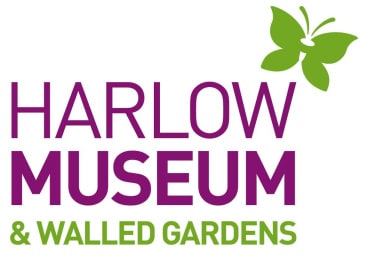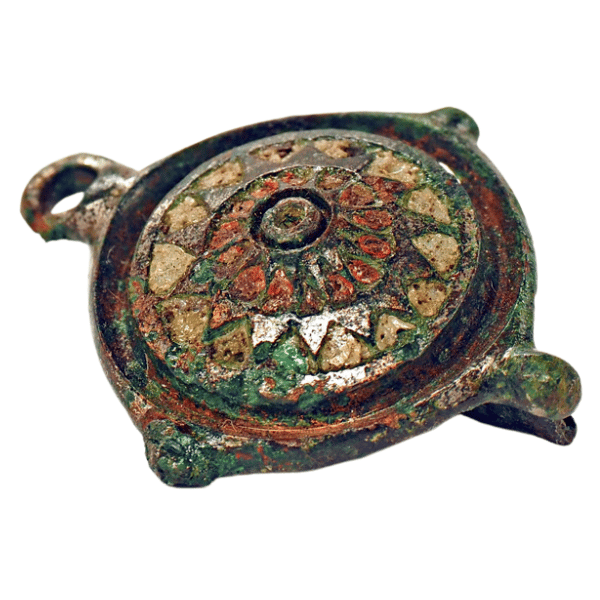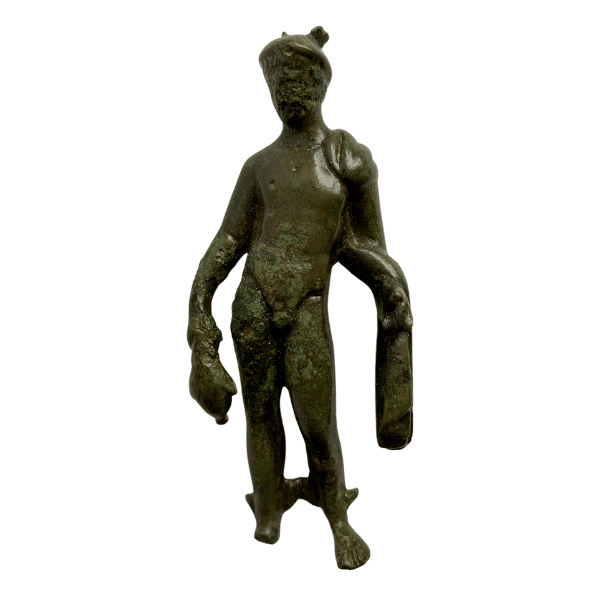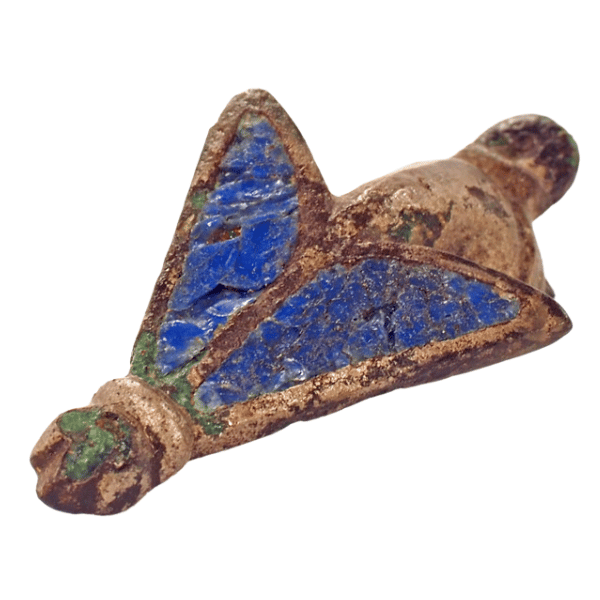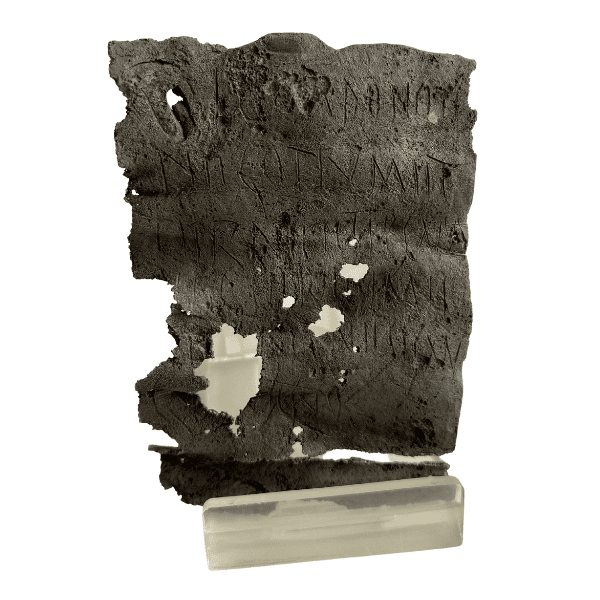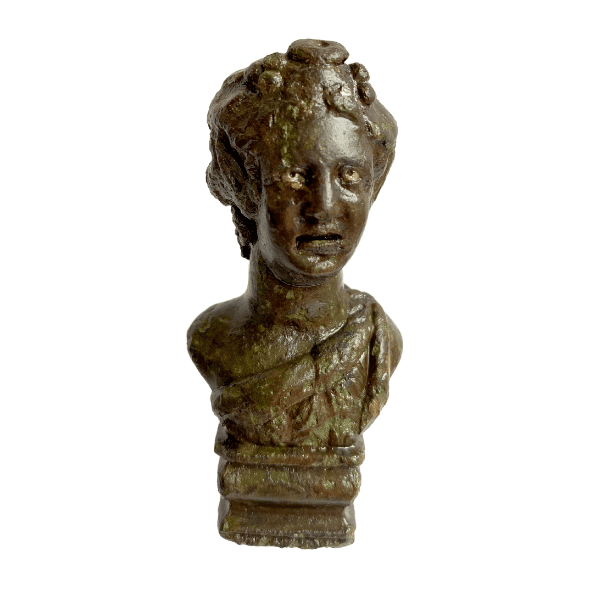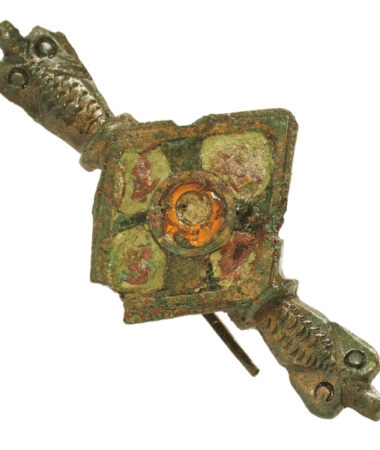
What’s on display?
Our Roman gallery is full of treasures excavated from a significant Roman Temple site in Harlow, this Romano-British temple is one of 69 examples found in Britain and Europe. The site was initially recorded with historic interest in 1764 and is one of the most excavated sites in the UK. The artefacts uncovered include pottery, personal items such as jewellery, iron tools, more than 1500 coins and a statue of the Goddess Minerva’s head.
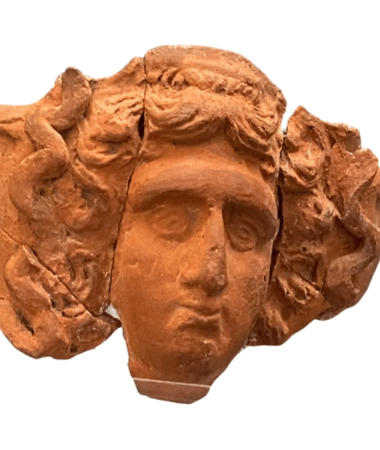
Romans in Harlow
During the Roman period a small town developed in what we now know as Harlow, goods from around the Roman Empire were traded in Harlow via road and river. The town consisted of mainly wooden buildings with shops and industries such as leather working, spinning and woodworking.
The Romans brought importance to the Harlow area by building a temple which became a focal point for local settlements. In later times, elements from their architectural contributions were re-used in later local buildings. For example, Roman bricks were taken from the temple site and used in buildings around the area such as St Mary at Latton church.
Temple site
There is great historical significance to the Harlow Temple site, it was constantly evolving; from the early prehistoric period to the Roman temple, to present. The site was once called Standing Grove and is now known as Stangrove Hill, the remnants of which can be visited today.
During excavations of the site in 1962 to 1971, five Bronze Age urned cremations were found and the later dig, 1985-9, found an early Bronze Age pond-barrow, along with early Iron Age pottery sherds. When the new railway line was being built, in 1839, workmen uncovered six Roman stone coffins. Other votive material, ranging from Iron Age to a Roman head of Minerva are in the museum today.
